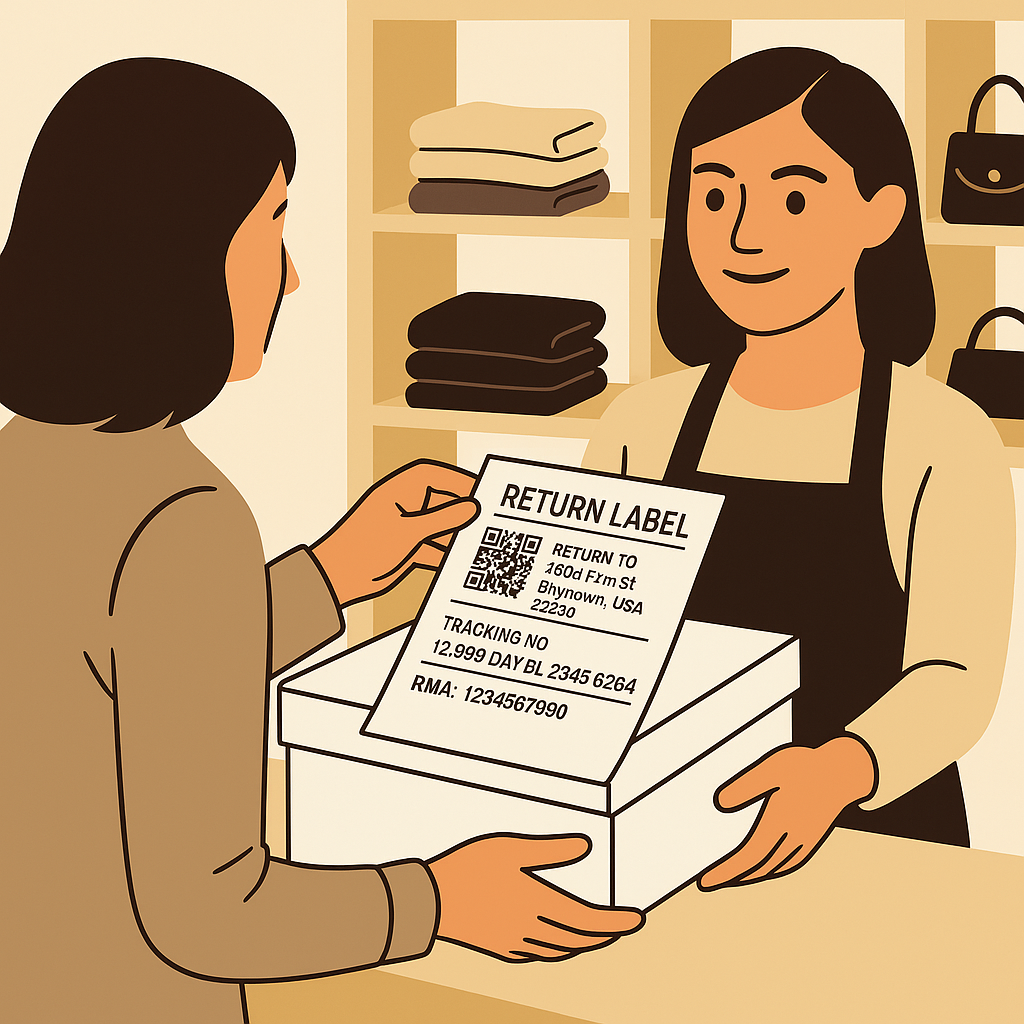Optimize In-Store Returns with a Proper Returns Policy

In-store returns play a big role in keeping customers happy. A clear, easy-to-follow returns policy prevents customers from becoming confused and frustrated at the counter.
Shoppers who know what to expect in the returns process feel safer shopping with you. A well-designed return policy is your path to loyalty, better trust, and lower returns handling costs.
Learn more about creating a strong return policy that works for your business.
Why In-Store Returns Matter for Retailers
A streamlined return process makes shopping more enjoyable and keeps people coming back. As a result, retailers enjoy stronger brand loyalty and better word-of-mouth. Handling returns well also protects margins and supports profitable returns over time. See how a strong strategy can help retailers thrive.
4 Keys to an Effective In-Store Returns Policy
Customers want flexibility when it comes to returns. Offering options like buy online, return in store (BORIS) can make a big difference in the shopping experience. Below are four ways to build a returns policy that meets these expectations and keeps customers returning.

No. 1: Clear Return Guidelines
Clear return rules set the tone for a simple, easy experience. Spell out your timelines, item conditions, and proof-of-purchase requirements so there’s no guesswork.
With simple and visible policies, disputes go down and customer loyalty goes up. Use store signage, receipts, and your website to share the same message.
No. 2: Make Returns Easy and Convenient
Customers don’t want to fill out forms or wait in long lines, so a fast, low-hassle return process keeps them coming back.
Train your staff to handle returns quickly and with a positive attitude. Offer flexible options like instant refunds, exchanges, or store credit. Shoppers appreciate having choices that fit their convenience.
Learn more about the impact of a free return policy on customer satisfaction.
No. 3: Buy Online Return In-Store (BORIS) Integration
Shoppers now expect to return online purchases in-store without extra steps. This trend, known as buy online, return in store (BORIS), has become a standard for convenience.
BORIS integration cuts shipping costs by allowing for fast in-store processing. This process returns products into inventory faster, so your stock count is always accurate and products are available for new customers to purchase.
No. 4: Automate and Standardize Returns Processing
Automating your returns process is the best of both worlds: you’ll enjoy higher accuracy and move returns faster. As a result, customers get refunds faster, and shelves restock more quickly.
Tools like barcode scanning and automated tracking keep things moving and make it easy to spot potential hangups. Using smart systems to handle returns creates a seamless experience for shoppers and employees.
See how we help businesses automate their returns workflows.
The Cost-Saving Benefits of a Strong Returns Policy
A smart returns policy puts you on the best path to efficiency and customer satisfaction. Look forward to:
- Higher accuracy in inventory
- Faster workflows
- Reduced unnecessary labor
Your returns policy can also help prevent inventory loss by streamlining how returns are inspected and restocked. That means fewer write-offs and better use of available stock. Our tools are built to deliver measurable cost savings and come with transparent pricing for every business size.
Best Practices for Managing In-Store Returns
Clear processes and smart technology make handling volume easier and keeping customers happy.
Explore these proven methods for better returns management.
Analyze Return Data to Improve Policies
Return data tells a story—and retailers should listen. Reviewing return trends helps you spot issues like repeat product defects or confusing policies.
These insights help refine return rules and prevent the same problems from happening again. They also support better forecasting, so you can prepare inventory and staff beforehand.
Dive into inventory analysis to turn returns data into smarter decisions.

Implement a Digital Returns Portal
Digital returns platforms are a great help to both shoppers and staff. Customers can start a return online anytime, without waiting in line or calling support.
These portals also help retailers better manage returns. Real-time tracking and organized workflows make it easier to monitor products, customer requests, and performance metrics. The result is fewer delays and better return handling at every step.
Offer Flexible and Customer-Centric Return Policies
Every shopper has different needs, and a strong returns policy should reflect that. Flexible options—like extended return windows or easy exchanges—help meet a wider range of expectations.
With hassle-free returns, customers are more likely to buy again and share positive experiences with others. Putting people first in your returns approach drives loyalty and builds trust.
Optimize Reverse Logistics for Better Inventory Management
When items come back, speed and accuracy matter. Optimizing reverse logistics helps retailers manage returned products efficiently.
A strong reverse logistics flow ensures goods are quickly inspected, restocked, or rerouted. Explore our returns management solution & our pricing options today.
